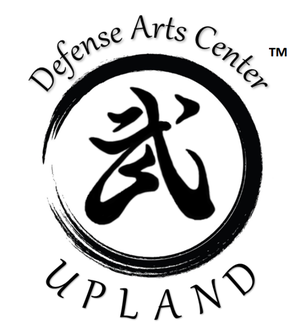The meaning behind the USKL symbol
CIRCLE
The circle represents the cycle of life, growth and change.
OPEN HANDS
The open hands stand for weaponless or empty handed self-defense. They signify nonviolence, an attitude of openness and honesty toward oneself and others, as well as receptivity to life, learning and growth.
FIST
The fist represents karate's martial aspect. This is understood as the self-discipline, effort and perseverance necessary to the training, and to the courage, self-confidence, and preparedness for self-defense it brings. The fist indicates power and strength that is developed through karate training, but only to be used wisely and justly.
JAPANESE CHARACTERS
The top figures, kara te, or "empty hand," refer to a system of weaponless combat. Philosophically, kara refers to emptiness and purity of motive. Expressed poetically:
"Kara is emptiness. From emptiness comes purity of motive. Where there is purity of motive there is nothing between action and reaction."
This is related to the Zen notion and experience of Mushin or no mind. In combat, in training or in any situation requiring this, one's mind is totally absorbed in the moment and is alert, not distracted by thoughts and feelings of fear, anger, nor motivated by concerns of self-aggrandizement. One's action then, is no more or less than the situation calls for. The attitude of seriousness and respect toward the training and the place of training, as well as the practice of sitting meditation before and after class, and the meditative focus required by the training itself, all contribute to the development of kime or focus and the purity of mind and motive spoken of here.
The Japanese term do, the figure at the bottom of the symbol, comes from the Chinese tao and signifies a path or way toward greater awareness and betterment of the individual and his or her relationships with others. This requires discipline and sincerity. These are at the core of proper karate training. However discipline and sincerity may be cultivated, whether in the martial arts or otherwise, they are crucial to a good human life. All human life must follow some do or tao in order to flourish.
SYMBOL
The symbol taken as a whole, expresses the aspiration of our school: to aid in the development of strong, discerning, responsible and well rounded individuals. To do this we stress the development of all levels of martial arts training: the physical, self-defensive, sportive, artistic, meditative, philosophical/ethical, and spiritual levels. This last level encompasses all the others. It represents the highest level to which any human enterprise proceeds.
This does not imply any doctrine, religious or otherwise. Rather, it refers to that in our humanness, which is both actual and potential, what is and what can be realized, and the indomitable spirit or drive or tendency which makes the potential become actual.
The martial art of karate is a means, not an end. There comes a point where the technique is transcended and it is seen as a stepping stone or preparation for becoming more fully human and alive. If we stop with the perfection of technique, that wholeness is lost. Through the perfection of technique we are developing ourselves.
At the spiritual level the martial artist has gone beyond the other levels, but without leaving them behind, in fact it is a return to the technique with greater appreciation for what it is that technique aims at beyond itself Technique is the means for a path of discipline that moves us toward our own wholeness.
Wholeness is not the perfection of technique, nor is it the intellectual grasp of the significance of the process of development toward wholeness. The martial artist does not just contemplate the philosophical and ethical dimensions and implications of his or her actions, but puts these insights into living practice and feels himself or herself as an expression of the universe. This is the most significant level of any human activity and self-mastery.
The highest form of self-mastery is beyond technique and beyond intellectual or philosophical understanding. It is in the way we live and experience our lives. Yet each of us must follow some tao, develop ourselves through some technique with the aid of philosophical awareness, in realizing this. What we seek is this complete integration of all aspects of our humanity that leads to living a good human life.


